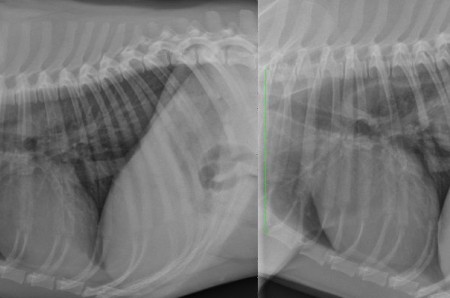No radiographic anomalies are detected on the native radiographs. On the compression radiograph, a gas containing viscus is detected in the dorsocaudal lung field. Around this viscus, a second tubular viscus is detected. The stomach is not visible in the cranial abdomen.
These findings are consistent with a hiatal hernia. The compression views are usually necessary to see the herniation. A normal radiography without compression doesn't exclude a hiatal hernia. When fluoroscopy is not available this technique is interesting.
These findings are consistent with a hiatal hernia. The compression views are usually necessary to see the herniation. A normal radiography without compression doesn't exclude a hiatal hernia. When fluoroscopy is not available this technique is interesting.

